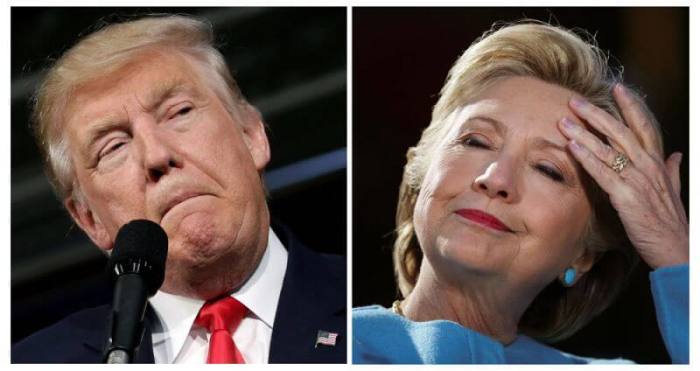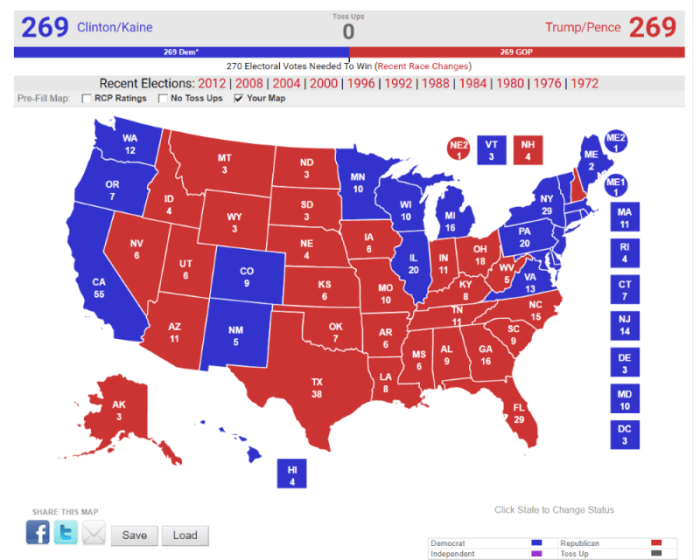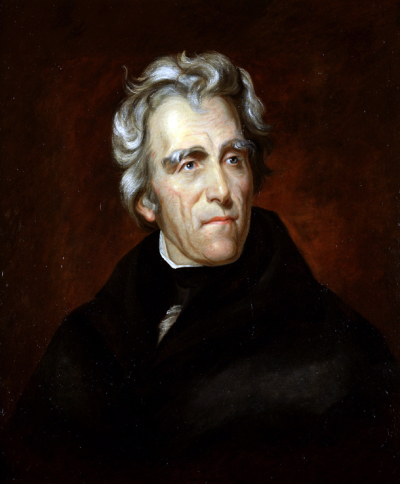What if the Presidential Election Is a Tie?

Tuesday marks the end of the long election season that pitted Democratic Party nominee Hillary Clinton against Republican Party nominee Donald Trump. Or will it?
Many polls have shown the two presidential hopefuls holding only slight leads in numerous states that are within the margin of error.
There is a chance, especially if third party candidates like Evan McMullin win a state, that neither Clinton nor Trump will get the necessary number of electoral points to become president.
So what happens if the big two nominees tie in their electoral college totals or neither of them get the minimum 270 to be elected?
First to note is that having both Trump and Clinton fall short of 270 electoral points is not an impossibility.
The presidential campaign election information site 270towin.com presently notes 97 different scenarios that could result in neither major party hopeful getting enough electoral points.
"While unlikely, a 269-269 electoral college tie is not out of the question in a competitive 2016 presidential election," noted the site.
Using the current toss-up states on Real Clear Politics, one can devise a scenario where the outcome is 269-269.

In the event of a tie or no candidate getting at least 270 points, the decision of who becomes the next president will go to the United States House of Representatives.
As noted by Article Two of the U.S. Constitution, "if there be more than one who have such majority, and have an equal number of votes, then the House of Representatives shall immediately choose by ballot one of them for President; and if no person have a majority, then from the five highest on the list the said House shall in like manner choose the President."
Article Two adds that rather than being a vote of all House members, "the votes shall be taken by States, the representation from each state having one vote; A quorum for this purpose shall consist of a member or members from two thirds of the states, and a majority of all the states shall be necessary to a choice."
If the first ballot still results in a tie, the House will continue to vote until January 20 of the following year. If by that date there is still no clear result, then either the Speaker of the House or the Vice President elect will serve as "interim president" until a winner is determined.

An example of the House determining the results of a presidential election can be found in 1824, when four major candidates ran for president.
Andrew Jackson won the most electoral points with 99, followed by John Quincy Adams with 84, William H. Crawford with 41, and Henry Clay with 37.
Although Jackson had the most electoral points and won the popular vote, he failed to get a majority of the electoral college and so it went to the House.
In what critics labeled the "corrupt bargain," the House voted to give the victory to Adams, due to House Speaker Clay's opposition to Jackson.
"Rather than see the nation's top office go to a man he detested, the Kentuckian Clay forged an Ohio Valley-New England coalition that secured the White House for John Quincy Adams," noted ushistory.org.
"In return Adams named Clay as his secretary of state, a position that had been the stepping-stone to the presidency for the previous four executives."
Outrage over the results of the 1824 election, however, fueled Jacksonian supporters and in the next election Jackson handily defeated Adams.




























